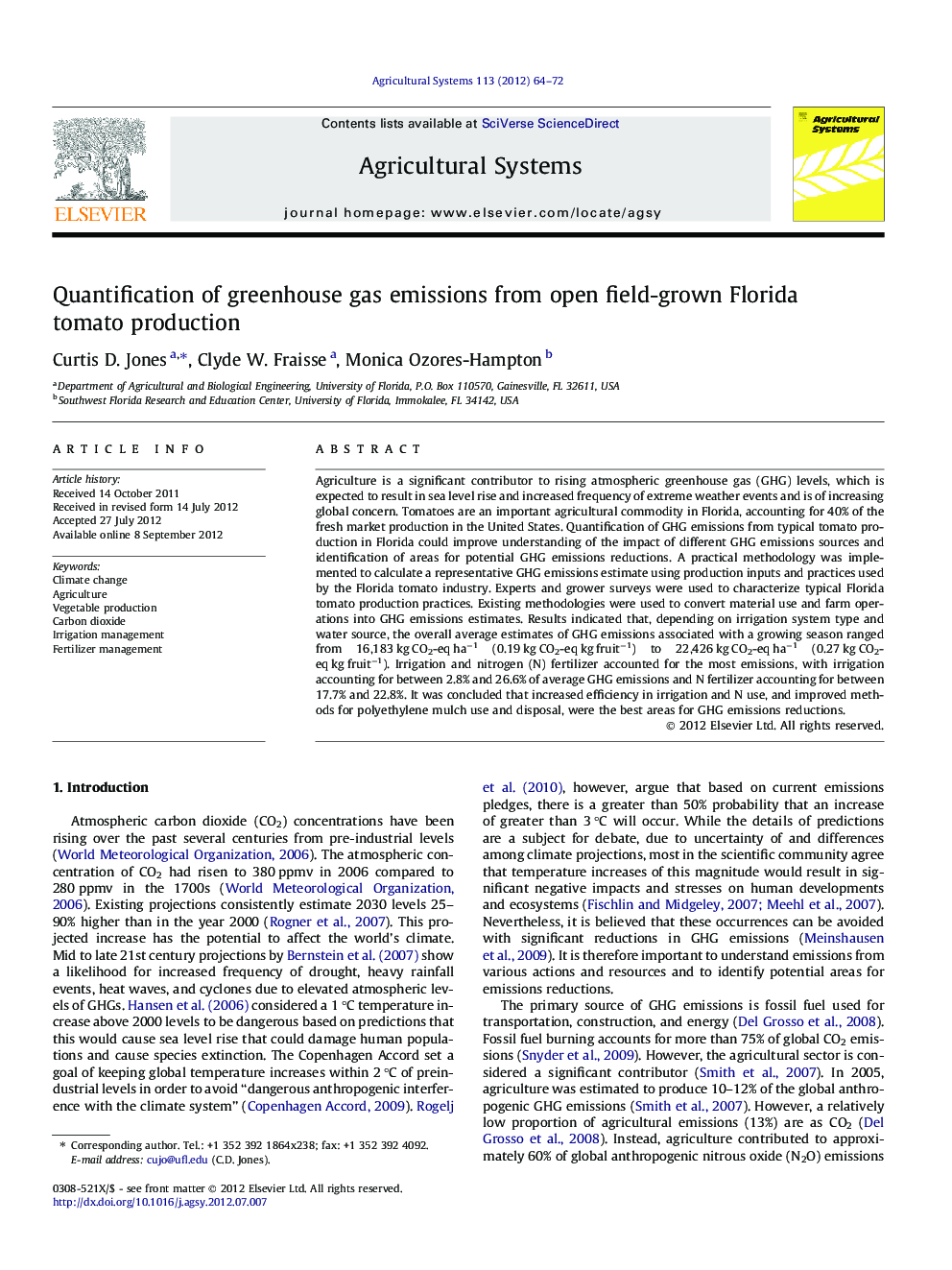| کد مقاله | کد نشریه | سال انتشار | مقاله انگلیسی | نسخه تمام متن |
|---|---|---|---|---|
| 4491351 | 1623257 | 2012 | 9 صفحه PDF | دانلود رایگان |

Agriculture is a significant contributor to rising atmospheric greenhouse gas (GHG) levels, which is expected to result in sea level rise and increased frequency of extreme weather events and is of increasing global concern. Tomatoes are an important agricultural commodity in Florida, accounting for 40% of the fresh market production in the United States. Quantification of GHG emissions from typical tomato production in Florida could improve understanding of the impact of different GHG emissions sources and identification of areas for potential GHG emissions reductions. A practical methodology was implemented to calculate a representative GHG emissions estimate using production inputs and practices used by the Florida tomato industry. Experts and grower surveys were used to characterize typical Florida tomato production practices. Existing methodologies were used to convert material use and farm operations into GHG emissions estimates. Results indicated that, depending on irrigation system type and water source, the overall average estimates of GHG emissions associated with a growing season ranged from 16,183 kg CO2-eq ha−1 (0.19 kg CO2-eq kg fruit−1) to 22,426 kg CO2-eq ha−1 (0.27 kg CO2-eq kg fruit−1). Irrigation and nitrogen (N) fertilizer accounted for the most emissions, with irrigation accounting for between 2.8% and 26.6% of average GHG emissions and N fertilizer accounting for between 17.7% and 22.8%. It was concluded that increased efficiency in irrigation and N use, and improved methods for polyethylene mulch use and disposal, were the best areas for GHG emissions reductions.
► We estimate the greenhouse gas emissions from open field-grown Florida tomato production.
► Estimates consider typical Florida tomato management practices.
► Irrigation and nitrogen fertilizer application accounted for the most greenhouse gas emissions.
► Improvements in irrigation practices and nitrogen fertilizer management could significantly reduce greenhouse gas emissions.
Journal: Agricultural Systems - Volume 113, November 2012, Pages 64–72